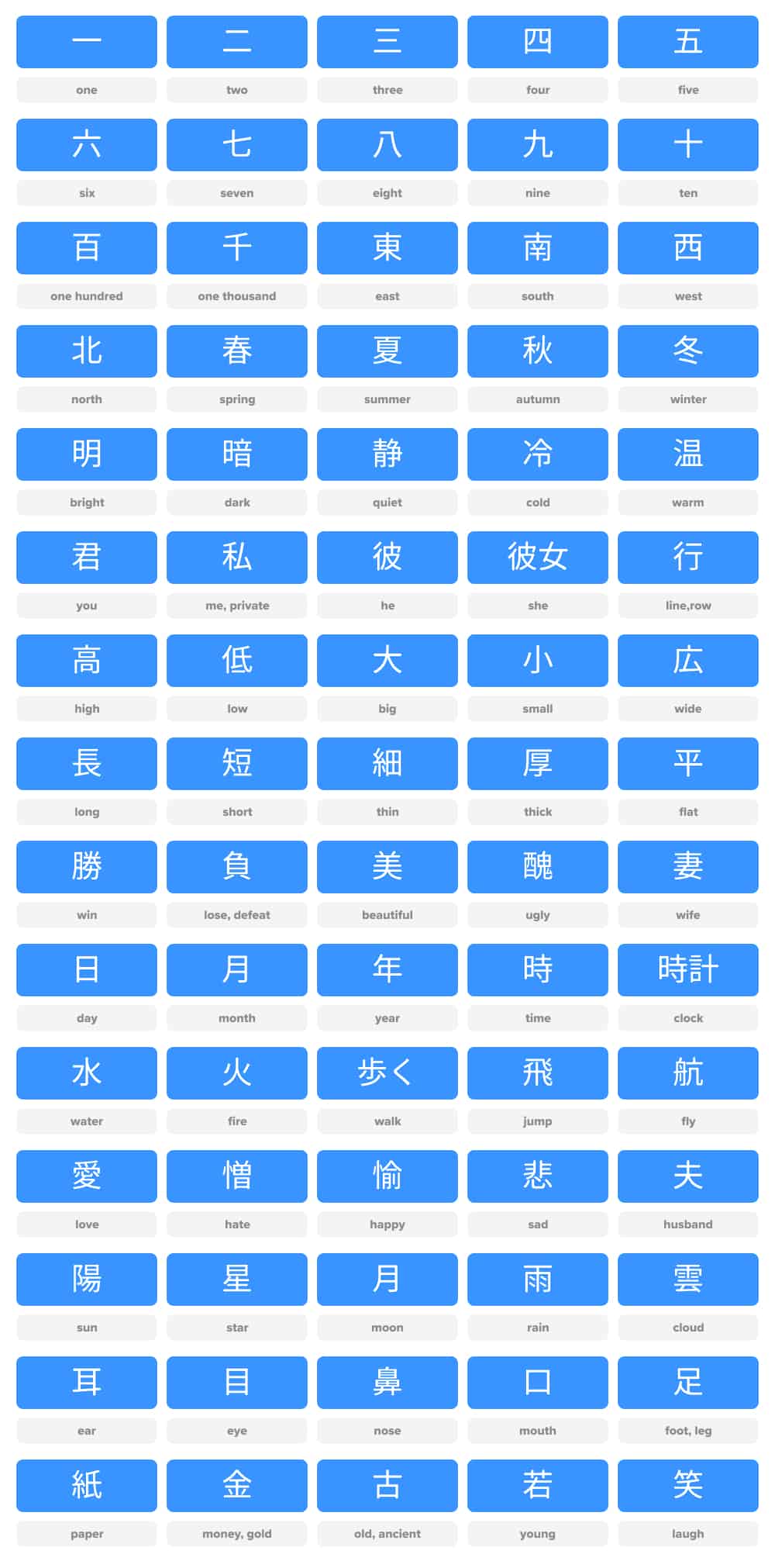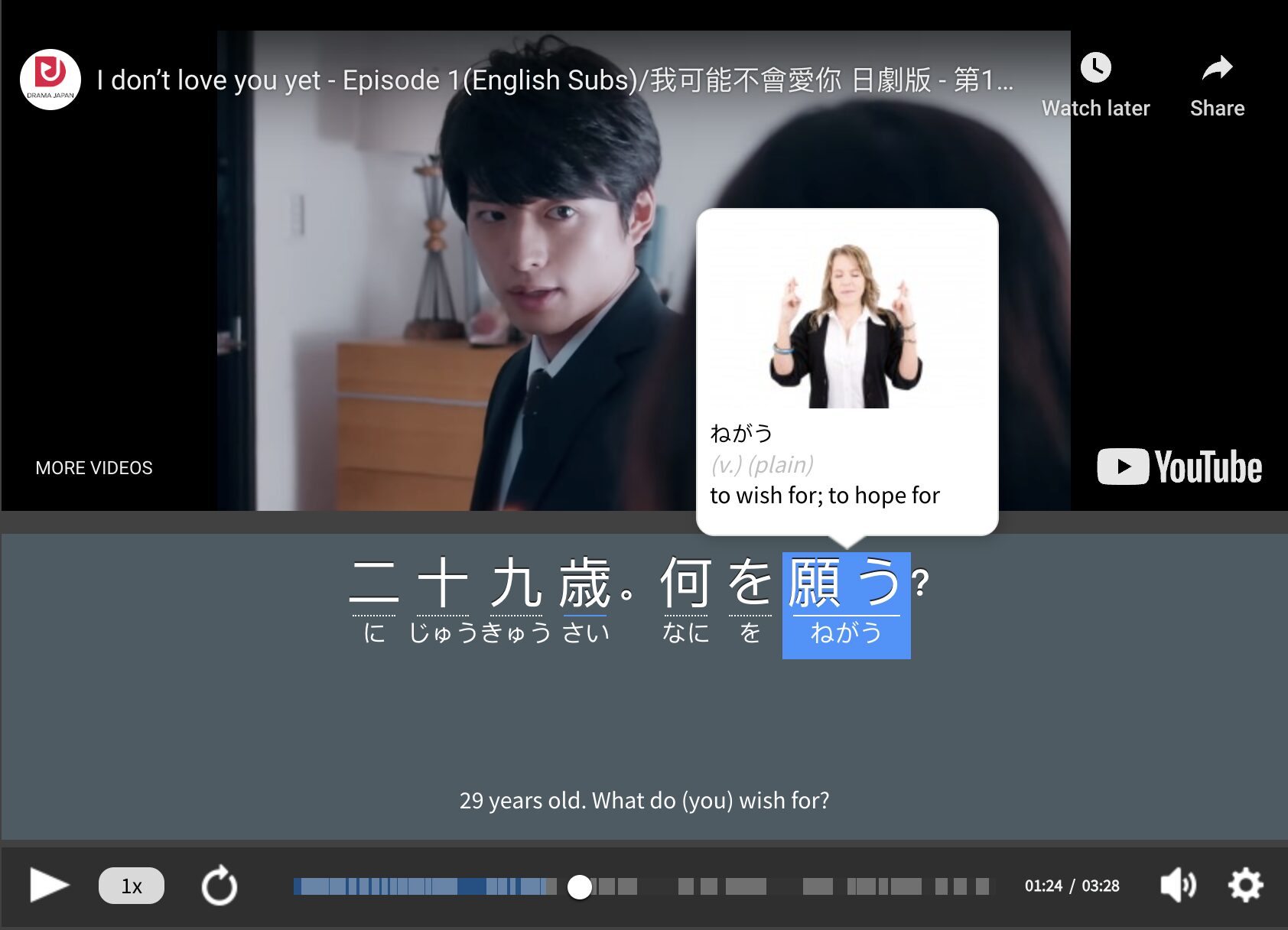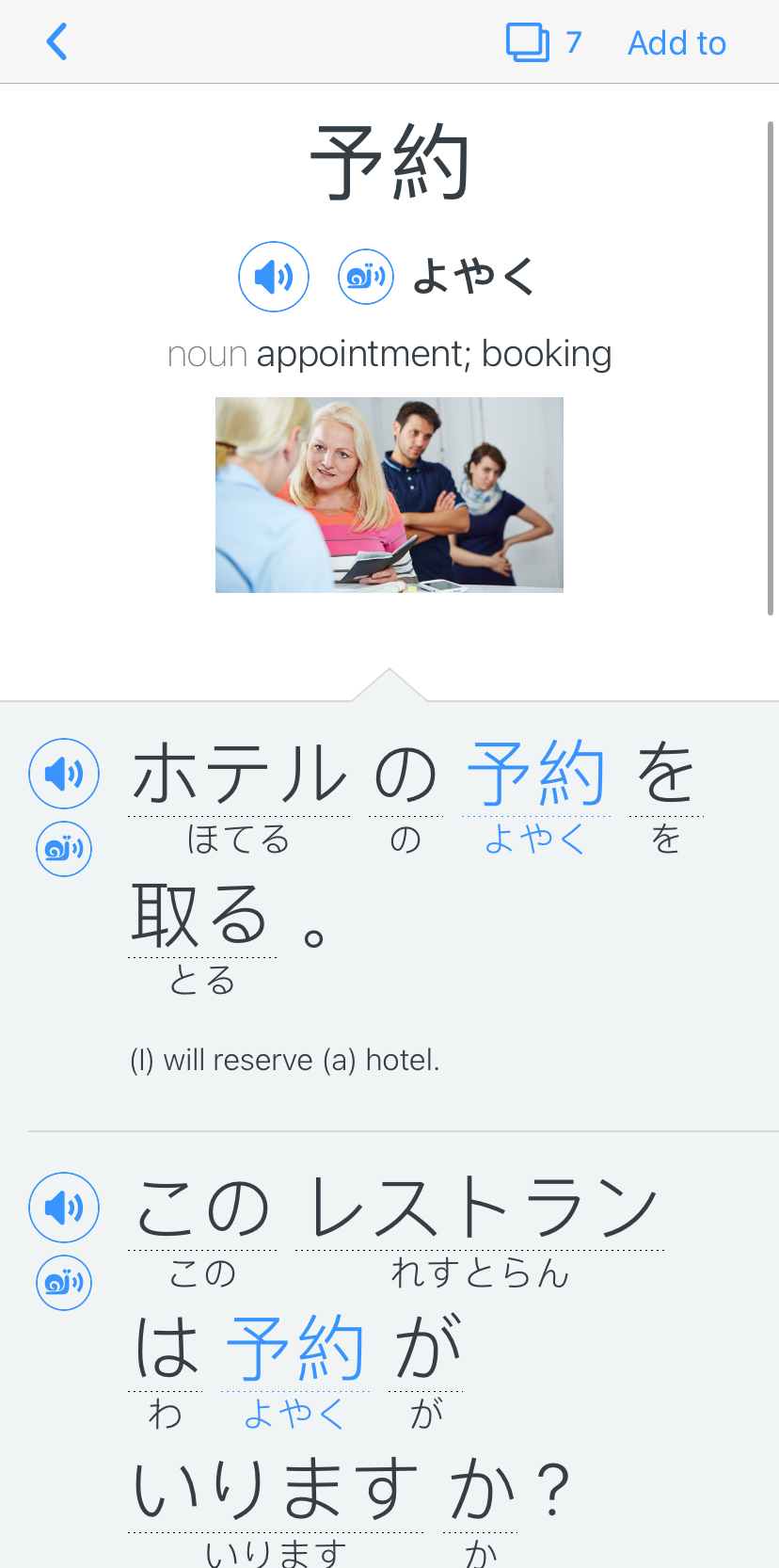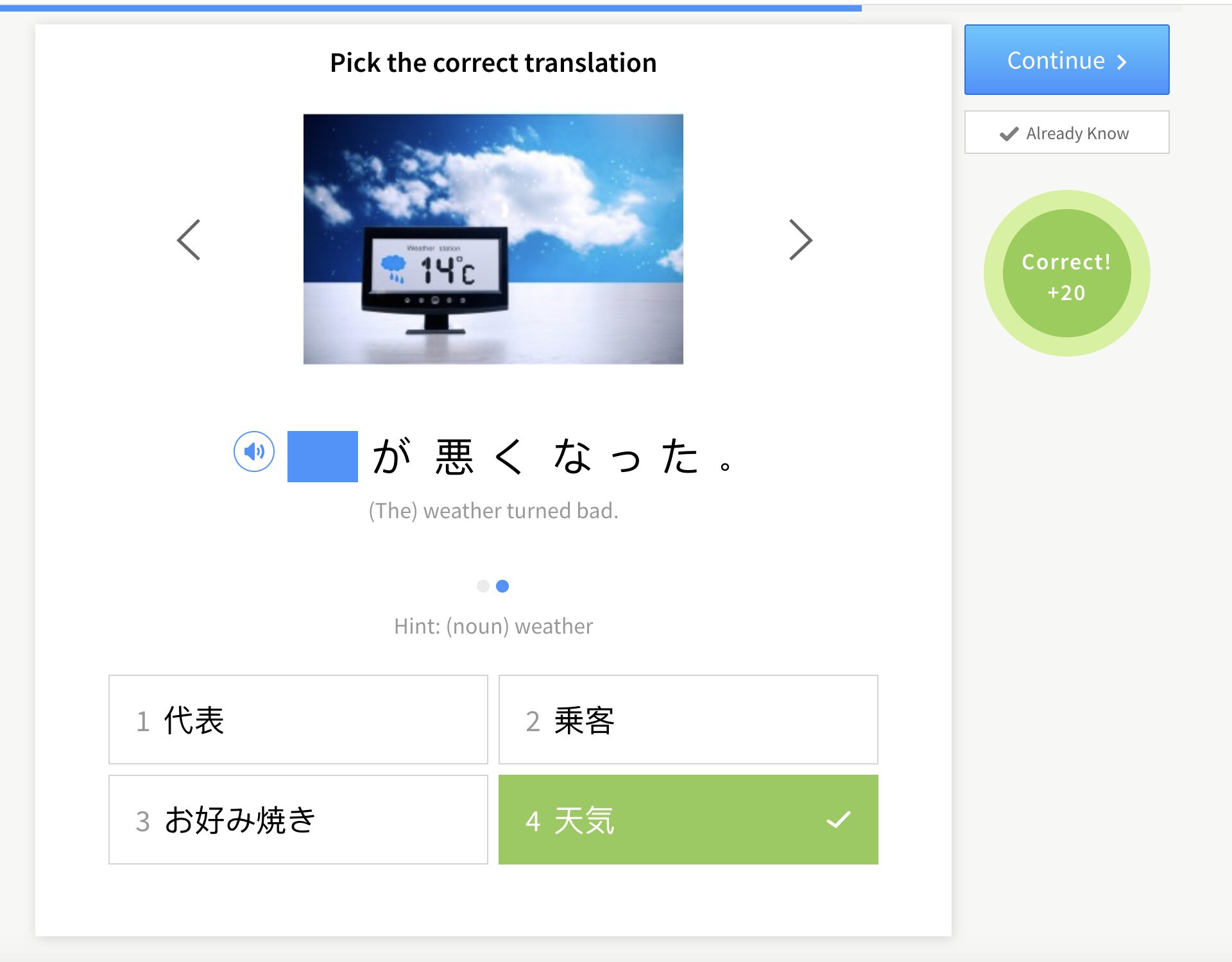Contents
- What Is Kanji?
- How to Learn Kanji Efficiently
- 1. Learn hiragana and katakana first
- 2. Get to know kanji radicals
- 3. Start with the most common kanji
- 4. Let guided kanji systems do (most of) the legwork for you
- 5. Study kanji based on their JLPT difficulty level
- 6. Start from the characters with the least to the most strokes
- 7. Don’t neglect stroke order (and writing in general)
- 8. Associate images with kanji
- 9. Do regular flashcard drills
- 10. Learn the kanji of new vocab
- 11. Read Japanese media that interests you
- 12. Watch shows with Japanese subtitles
- 13. Make a kanji phrasebook
- 14. Practice writing kanji with native speakers
- 15. Start a Japanese blog
- 16. Set up a competition with fellow learners
- 17. Set realistic goals
- 18. Track your progress
- Why You Should Learn Kanji
- And One More Thing…
How to Learn Kanji: 18 Tips from a Guy Who Did It and Survived

Kanji characters were a serious struggle for me—but now, several years later, I can read Japanese well. It sounds like a long time, but remember that it takes Japanese students from kindergarten to the last year of high school to attain this basic fluency.
After my own kanji journey, I have some tips that I think could’ve saved me time, and I’d like to share them with you.
Download: This blog post is available as a convenient and portable PDF that you can take anywhere. Click here to get a copy. (Download)
What Is Kanji?
Kanji are Chinese characters that are part of the Japanese writing system, which also includes hiragana and katakana, the two sets of Japanese phonetic alphabets.
I think most Japanese learners will agree that kanji are the trickiest part of learning how to read Japanese. Not only are there so many of them, but some kanji have as many as seven possible readings!
To become literate in Japanese, you need to know the roughly 2,000 “Standard Use Kanji” ( 常用漢字 / じょうようかんじ). These are the ones that often pop up in newspapers, magazines, novels, advertisements and so on.
That number might sound intimidating, but I’ll show you the study techniques I used to master them below.
How to Learn Kanji Efficiently
1. Learn hiragana and katakana first
I’ve mentioned hiragana and katakana earlier, and I strongly believe that before you even think about learning kanji, you should master these two writing systems (collectively called “kana”) first.
Not only will they help you read kanji in authentic contexts (e.g., text with furigana), but they’ll also help you nail your Japanese pronunciation from the get-go.
For example, kanji in Japanese would be 漢字 (かんじ). If you read that with a native English accent, you’ll probably sound something like “kahn-jeeh.” In Japanese, however, you don’t roll your vowels the way you do in English. All of the Japanese vowel sounds have only one pronunciation.
In case you need a refresher on what hiragana and katakana are:
- Hiragana are used for Japanese words that lack kanji or have overly difficult kanji that are falling out of use. They also serve as particles and as parts of verb conjugations, making them essential to Japanese grammar. If you’re wondering what the words in parentheses next to some of the kanji in this post are, they’re hiragana!
- Katakana are mainly used for loanwords and 和製英語 (わせいえいご), or words that are ostensibly English but are actually unique to the Japanese language like サラリーマン (さらりーまん / salaryman).
Luckily, hiragana and katakana both have only 46 characters each. They’re also basically different ways to write the same set of sounds, so you can easily memorize them in less than a week with regular repetition.
Plus, you can get some much-needed hiragana practice here and katakana drills here.
2. Get to know kanji radicals
Once you’ve mastered the kanas, you can move on to radicals. Radicals are smaller parts that make up most kanji.
For example, the kanji for “autumn” is 秋. Notice how it contains two parts: 禾, which is the radical for “two-branch tree” or “grain,” and 火, the radical for “fire.”
Learning the approximately 200 radicals in Japanese is important for a couple of reasons:
- Radicals can give you clues to a surprising amount of kanji. For example, both the characters for “sea” (海) and “to wash” (洗う) have the radical for “water” (氵), making it easier to decipher what they mean.
- Radicals can help you guess the pronunciation, too. Often, characters with similar radicals will also have similar pronunciations. For example, 泡 (bubble) and 砲 (gun or cannon) can both be read as ほう . (Also, notice how 泡 has the radical for “water,” while 砲 has the radical for “stone” or 石. Neat!)
While radicals aren’t magic bullets that can smash all of the obstacles to your kanji mastery, they can still make learning kanji much more of a cakewalk compared to, say, rote memorization.
If you want to check out all 200+ radicals, read this thorough guide or watch this playlist of video tutorials on YouTube.
3. Start with the most common kanji
After you’ve got the kanas and radicals down, your next question would probably be along the lines of “Which kanji should I learn first?” or “In what order should I learn kanji?”
If I’m being honest, there’s no “right or wrong” order to learning kanji—not for non-native Japanese speakers anyway. (Japanese students typically learn kanji from the least to the most complex in terms of meaning or definition.)
In the next few sections, I’m going to walk you through some possible systems you can use to learn kanji. Again, these methods aren’t prescriptive. Just go with whatever works for you, even if it’s not mentioned here!
With that out of the way, one method is to start with the 75 most common kanji below:
But if you want to learn much more than these 75 characters (and trust me, 75 won’t even get you anywhere near basic literacy), you can also use frequency lists like this one from Wiktionary.
4. Let guided kanji systems do (most of) the legwork for you
If you’re already using or planning to use a guided system like Andrew Scott Conning’s “The Kodansha Kanji Learner’s Course: A Step-by-Step Guide to Mastering 2300 Characters” or apps like WaniKani, you can just go with the order and method presented.
After all, learning Japanese is already tough enough as it is. Why make it even more difficult by trying to devise your own study system from scratch?
Besides, you can always use forums like /r/LearnJapanese on Reddit to see what other learners have to say about these systems—positive or otherwise.
5. Study kanji based on their JLPT difficulty level
Another way to figure out in what order you should learn kanji is to check out Japanese Language Proficiency Test (JLPT) textbooks. Chances are you’ll find kanji grouped from the easiest or lowest level (N5) to the highest or most difficult (N1). It’s not a perfect system, but it’s better than starting from nothing at all.
6. Start from the characters with the least to the most strokes
If you’re still undecided on what order to learn kanji in, you can also go by the number of strokes (lines that make up the characters) per kanji. Start with the kanji with the fewest parts and work your way up from there. This method has the advantage of not overburdening you with really complex kanji early on.
Most kanji textbooks and print Japanese dictionaries have an index of kanji according to stroke order, such as “The Kodansha Kanji Learner’s Course” I mentioned earlier. They also order kanji according to other criteria like the radicals used, so have fun with it!
7. Don’t neglect stroke order (and writing in general)
Speaking of strokes, you might think that stroke order doesn’t really matter when you’re learning kanji. After all, what’s important is that the characters are readable once you’ve written them down, right?
Not quite. There are a number of reasons stroke order is crucial to mastering kanji, as tedious as it is to study:
- Stroke order allows you to decipher illegible Japanese characters written by hand. Proper stroke order is practically drilled into Japanese students’ heads from the moment they learn how to write. That means everyone who can write kanji writes them in the same way. So even if someone’s handwriting looks like chicken scratch or classical calligraphy, you can still read it if you know the stroke order of the characters used.
- Stroke order makes it easier to type kanji characters using your keyboard. Going off of the last point, you might be thinking “But we’re in the internet age! Hardly anyone writes by hand anymore.” Thing is, many digital Japanese keyboards give you the option to manually write out kanji—and the better you know the stroke order, the faster you’ll find the character you’re looking for. Granted, you can also just type the hiragana and choose from the suggestions, but this method is pretty inefficient when you consider how many kanji characters there are.
- Writing things down by hand makes it easier to memorize characters. Studies show that when you write something down by hand, you’re more likely to remember what you wrote. In fact, I’ve used stroke order to memorize several characters that just wouldn’t stick in my mind because they look similar.
So, don’t neglect writing just because we live in a digital world. It’ll give you the leg up you need to learn kanji more concretely. Try out Japanese Kanji Study for Android or Learn Japanese Kanji for iOS to practice typing new kanji on your phone.
8. Associate images with kanji
In other words, learn kanji using mnemonics.
Mnemonics is the use of stories and associations to learn a new skill or create a new memory. A mnemonic can be anything (a word, picture, song or acronym), as long as you can easily link it to the kanji you’re trying to learn.
For example, the character for “person” (人) looks like a human without arms. Likewise, the character for “tree” (木) has horizontal and diagonal strokes that look like branches and one vertical stroke that looks like a tree trunk.
I tend to make up funny (and often absurd) mnemonics, because these help me recall kanji much faster than more serious associations. This is personal to me, though, so just go along with what seems to pop up most easily in your brain.
If you’re not too confident in your ability to form mnemonics, don’t fret! You can also pick up books like “Remembering the Kanji” by James Heisig (possibly the most famous book on learning kanji aimed at non-Japanese speakers) and “Kanji Pict-O-Graphix” by Michael Rowley, and use the mnemonics they recommend instead.
9. Do regular flashcard drills
I’ll grant that drills aren’t the most entertaining way to study, but it gets the job done. I learned a lot of kanji mainly by using flashcards, as follows:
- Spend at least half an hour a day doing flashcard drills. During those crucial 30 minutes, I’d learn seven new kanji characters and drill ones I’d learned previously.
- Drill both meanings and readings. It’s much easier to remember the meanings than the readings. As I’ve mentioned earlier, some characters can have as many as seven of these. Luckily, most only have two to three readings. (That’s still one too many, but much easier than seven!)
- Use a flashcard app like Anki. Anki is arguably the most popular flashcard app for any language. What’s great about it is that it goes beyond showing you flashcards: it actually optimizes your reviews based on spaced repetition. That means regular review will help you remember most of the kanji characters long-term until you won’t need to review them anymore. You can follow this step-by-step guide to learning kanji with Anki and/or download ready-made kanji flashcard decks (for free!) to make the most of this app.
10. Learn the kanji of new vocab
Whenever I learn a new vocabulary word, I always try to learn the kanji for that new word. I also look at other vocabulary words with that kanji to see it in context and better understand the nuances of the character.
Luckily, most kanji learning materials offer common vocabulary items for each entry, such as:
- Jim Breen’s WWWJDIC. This is one of the go-to online resources for Japanese learners. The best part is you can access it for free!
- imiwa. Type in a kanji character into this iOS dictionary app, and it’ll spit out several different words with that character.
- Kanji Damage. This practical and context-oriented online book contains around 1,700 kanji. It also has an irreverent style and focuses on examples that could suit your specific learning style and needs.
11. Read Japanese media that interests you
Let’s be real: Japanese textbooks aimed at language learners can get a little stale over time.
To switch things up, you can always read things like:
- Manga. For example, “Yotsuba&” is a great manga for beginners that will help you early on in your Japanese reading practice.
- Japanese literature. If you have the English version of a book that was originally in Japanese (like many of Haruki Murakami’s works), you can search for its Japanese title on Amazon JP and buy it from there. Just make sure the book can be shipped to your location!
- Blogs. The internet is a huge place. If you’re interested in a certain hobby or topic, chances are a Japanese blog about it exists.
- News websites. Fortunately, NHK has a News Web Easy section, which is exactly what it sounds like: simplified Japanese news articles for learners complete with furigana, audio and definitions of new vocab that appear when you hover your cursor over the underlined words.
12. Watch shows with Japanese subtitles
All reading and no watching make studies duller than they need to be.
Why not maximize your Netflix subscription and switch on the Japanese subtitles for that J-Drama you’re watching? Alternatively, check out other websites where you can legally watch shows with Japanese subtitles.
You can also try a language learning program like FluentU.
FluentU takes authentic videos—like music videos, movie trailers, news and inspiring talks—and turns them into personalized language learning lessons.
You can try FluentU for free for 2 weeks. Check out the website or download the iOS app or Android app.
P.S. Click here to take advantage of our current sale! (Expires at the end of this month.)

13. Make a kanji phrasebook
Here’s how a kanji phrasebook works (the way I use it anyway):
- Get a blank notebook, and write down all of the new kanji you discover or want to learn. I usually include the furigana and meanings as well so I can get used to reading and using them in context. Also, I can reference the phrasebook every time I forget a character later.
- Look out for Japanese advertisements and take note of the kanji they use. Japanese magazines, catalogues and variety shows are all plastered with advertising, which is generally written in catchy, colloquial language. Translate and memorize the catchphrase on these, then write down some of the kanji in your phrasebook. This way, when you see the kanji elsewhere, you’ll be reminded of the advertisement which will, in turn, trigger the memory of the kanji’s meaning in your mind.
14. Practice writing kanji with native speakers
There are many subtleties to writing kanji, and you learn these best when you have a native speaker point out your mistakes to you—and encourage you when you’re doing something right!
For example, you can try exchanging emails with a penpal. You can usually find these on places like Conversation Exchange or ChatPad, the latter of which is a site that randomly pairs you up with a Japanese partner to chat with.
15. Start a Japanese blog
A good way to keep yourself on track with your kanji studies is to go public about the fact. Post about your progress on social media or start a blog chronicling your journey to Japanese literacy.
Better yet, try to write these posts entirely in Japanese. This way, you’ll have solid proof of how far you’ve come and how much you still need to learn.
16. Set up a competition with fellow learners
A competition with other people learning kanji may also boost your motivation to study. You guys could:
- Agree on a date in several months’ time. When that date comes, you can test yourselves to see who has learned the most by then.
- Set a specific number of kanji you all have to learn, and race to be the first to be able to read and/or write them all. You could also keep up-to-date by testing each other every week leading up to the deadline.
- Figure out a good rewards system for yourself or your study group. For example, you could all go out for sushi once you’re able to read all the kanji on the menu!
17. Set realistic goals
Naturally, your overarching goal is to become fluent in Japanese. But what does that look like to you? How do you make your goal SMART—specific, measurable, achievable, realistic and timely?
Let’s say you want to master all of the 2200-ish kanji to be “newspaper fluent” in one year. That means you need to study about six to seven new kanji every day.
This goal is specific (“newspaper fluent”), measurable (“2,200-ish”), achievable (“about six to seven new kanji every day”) and timely (“in one year”).
But is it realistic? Can you learn six to seven new kanji completely every day including the meaning and the readings?
If you can, great! If you can’t, you may have to tweak your timeframe a bit (like extending it to two years, for example).
Don’t try to set a goal that’s too high early on. Otherwise, you’ll get demotivated if you don’t meet that goal. It’s okay to make learning a part of your life, but not to the point that it’ll consume you and make you end up hating it.
18. Track your progress
There’s nothing more motivating than finding out just how far you’ve come in your studies. Test your kanji ability at the start to get an idea of what level you’re at, then test yourself periodically as you learn (e.g., every few weeks or months).
There are various online tools to test your proficiency, such as MLC Kanji Level Check. This quick test gives you an estimate of how much kanji you know.
There’s a less formal but immensely rewarding way to track your progress: be aware of your increasing literacy. Pick up a Japanese novel/manga/magazine/newspaper and take note of how much more you can read than you could last time.
Being able to read something—even if it’s just one sentence—that was totally incomprehensible before is really quite amazing!
Why You Should Learn Kanji
Of course, you don’t need to learn kanji to speak Japanese fluently. But it’s still important to learn for several reasons.
Reading kanji is essential for complete literacy in Japanese
This may sound obvious, but you don’t really know a language unless you’re literate in it. It’s easy to take this for granted in languages like Spanish or German, which use the same alphabet as English.
Languages that don’t use the Roman or Latin alphabet (e.g., Chinese, Korean and Japanese), on the other hand, require learners to really put in the time to read them. Japanese learners, in particular, need to get used to getting their head twisted around by kanji.
Kanji helps you pick up new vocabulary
When you learn new Japanese words, you can figure out their meanings if you know the kanji.
Even if you’ve never seen or heard of a certain kanji before, you can break it down by its radicals and make an educated guess as to what it means. And most of the time, your guess would be correct!
Knowing kanji will help you get around Japan
If you ever plan to live in Japan, you’ll need to learn kanji to find your way around. Very few signs are in English, especially those outside of major cities.
Also, kanji helps you read the entries on restaurant menus (which won’t always have pictures) as well as the descriptions on products you buy.
Even if you’re just traveling to Japan for a visit, being able to read basic signs and instructions in the language will make you feel a lot more confident.
Learning kanji will take time, but as you learn more and more, you’ll be able to ride an ever-growing high of accomplishment throughout your journey.
Keep at it and eventually, you’ll be identifying all of the kanji that looked so mysterious before!
Download: This blog post is available as a convenient and portable PDF that you can take anywhere. Click here to get a copy. (Download)
And One More Thing…
If you’re like me and prefer learning Japanese on your own time, from the comfort of your smart device, I’ve got something you’ll love.
With FluentU’s Chrome Extension, you can turn any YouTube or Netflix video with subtitles into an interactive language lesson. That means you can learn Japanese from real-world content, just as native speakers actually use it.
You can even import your favorite YouTube videos into your FluentU account. If you’re not sure where to start, check out our curated library of videos that are handpicked for beginners and intermediate learners, as you can see here:
FluentU brings native Japanese videos within reach. With interactive captions, you can hover over any word to see its meaning along with an image, audio pronunciation, and grammatical information.
Click on a word to see more examples where it's used in different contexts. Plus, you can add new words to your flaschards! For example, if I tap on 予約, this is what pops up:
Want to make sure you remember what you've learned? We’ve got you covered. Each video comes with exercises to review and reinforce key vocab. You’ll get extra practice with tricky words and be reminded when it’s time to review so nothing slips through the cracks.
The best part? FluentU tracks everything you’re learning and uses that to create a personalized experience just for you. Start using the FluentU website on your computer or tablet or, better yet, download our app from the App Store or Google Play.
Click here to take advantage of our current sale! (Expires at the end of this month.)










